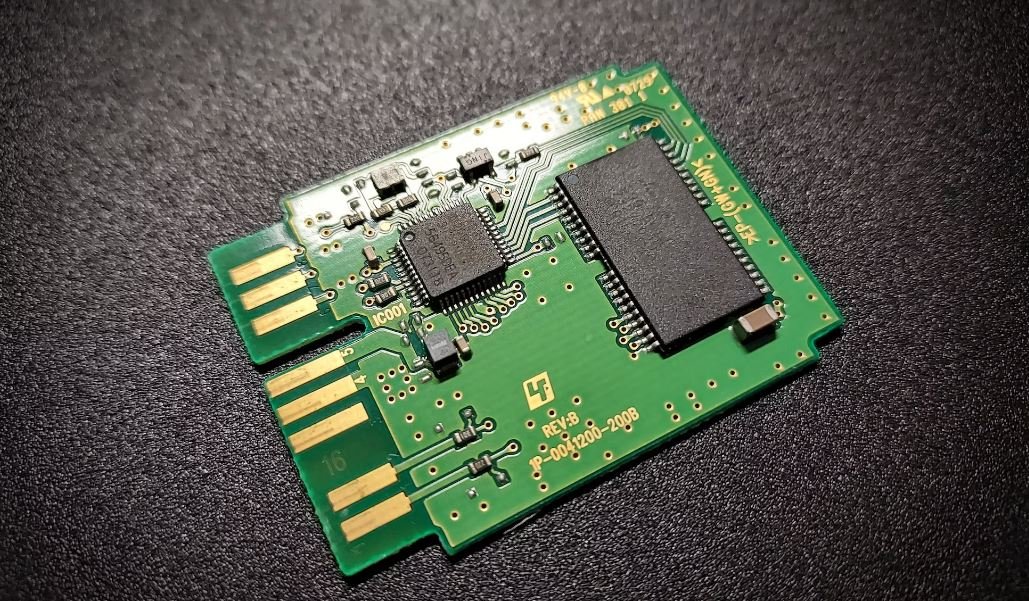Create Generative Music
Generative music, also known as algorithmic composition, is a technique that involves using algorithms and software to generate music automatically. Instead of relying on traditional musical composition techniques, generative music explores the possibilities of randomness and automation to create unique and ever-evolving musical compositions. In this article, we will delve into the world of generative music, exploring its key concepts, techniques, and tools, and how you can get started in creating your own generative compositions.
Key Takeaways
- Generative music utilizes algorithms to create unique and evolving compositions.
- Randomness and automation play a crucial role in generative music.
- There are various tools available to help you create generative music.
- Customization and experimentation are key elements in generative music creation.
- Generative music offers endless possibilities for creativity and discovery.
Understanding Generative Music
Generative music embraces the idea that musical compositions can be created through the use of algorithms and automation. By defining certain rules, parameters, and algorithms, a generative music system can generate an infinite number of unique musical compositions. *This brings forth a new approach to music creation, where the composer relies on the software to generate innovative patterns, melodies, and harmonies, rather than relying solely on their own expertise and creativity.*
Generative music can be seen as an exploration of the complex relationship between the composer, the algorithm, and the resulting musical output. It offers a refreshing departure from traditional composition techniques and opens up new possibilities for creative expression.
Techniques and Tools for Generative Music
There are various techniques and tools available for creating generative music. Let’s explore some of them:
1. Algorithmic Composition
Algorithmic composition involves using algorithms to generate musical patterns, melodies, and harmonies. These algorithms can be based on mathematical formulas, randomization, or other predefined rules. By experimenting with different algorithms, composers can create unique and unexpected musical compositions.
2. Markov Chains
Markov chains are statistical models that can be utilized in generative music. They involve analyzing existing musical data and creating transition probabilities between different musical elements. By using these probabilities, composers can generate new musical sequences that share similar characteristics to the analyzed data.
3. Genetic Algorithms
Genetic algorithms mimic the process of natural selection to generate musical compositions. They start with an initial population of musical sequences and then evolve them through random mutations and selective breeding. The best-performing sequences are chosen for the next generation, gradually improving the compositions over time.
4. Generative Music Software
There are several dedicated software applications and frameworks available for creating generative music. These tools provide intuitive interfaces, algorithm libraries, and real-time feedback to assist composers in their exploration and experimentation with generative music.
Getting Started with Generative Music
To begin creating your own generative music, here are some steps you can take:
- Choose your tools: Select the appropriate software or framework that aligns with your creative goals and level of expertise.
- Define your parameters and rules: Decide on the musical elements you want to control and define the algorithms, patterns, or statistical models that will generate the music.
- Experiment and iterate: Start generating music using your chosen techniques and tools. Listen to the results, adjust parameters, and fine-tune your algorithms to create the desired musical output.
- Customize and personalize: Inject your own artistic vision and style into the generative music by introducing variations, modifying patterns, or adding unique elements.
- Share and collaborate: Share your generative music creations with others, collaborate with other artists, and gather feedback to further refine your compositions.
The Exploration of Generative Music
Generative music provides a rich and ever-evolving landscape for musical exploration and creativity. By embracing the power of algorithms and automation, composers can push the boundaries of traditional composition techniques and discover new sonic possibilities. *Each generative music composition becomes a journey of exploration, where the composer and the software continuously interact and evolve, shaping the music in unexpected and exciting ways.*
Through the utilization of various techniques, tools, and their own creative input, musicians can unlock the potential of generative music and embark on a limitless voyage of sonic discovery.
Start exploring and creating generative music today, and unleash your boundless musical imagination!

Common Misconceptions
Paragraph 1
One common misconception people have about generative music is that it is solely created by computers. While computers play a significant role in generating the music, it is not entirely computer-controlled. In fact, generative music often involves collaboration between human musicians and computers, with both contributing to the final product.
- Generative music involves collaboration between humans and computers.
- Computers play a significant role in generating the music.
- It is not entirely computer-controlled.
Paragraph 2
Another misconception is that generative music lacks the emotional depth and authenticity of traditionally composed music. Many assume that music generated by algorithms may sound mechanical and lacking in human expression. However, generative music can be programmed to evoke emotions and convey unique artistic visions, just like any other form of music.
- Generative music can evoke emotions.
- It can convey unique artistic visions.
- It is not necessarily mechanical or lacking human expression.
Paragraph 3
Some people believe that generative music is purely random noise or chaos, with no discernible structure or purpose. However, generative music is created with specific algorithms and rules designed to generate coherent compositions. It can have a well-defined structure, rhythm, and melody, even though it may appear complex or unconventional to some listeners.
- Generative music is created with specific algorithms and rules.
- It has a well-defined structure, rhythm, and melody.
- It may appear complex or unconventional to some listeners.
Paragraph 4
Many people mistakenly assume that generative music is just background or ambient music without any real artistic value. While generative music can certainly be used as background music, it is also a valid form of artistic expression. Artists and composers use generative techniques to explore new sonic possibilities, challenge traditional music structures, and create innovative compositions.
- Generative music can be used as background music.
- It is also a valid form of artistic expression.
- It allows artists to explore new sonic possibilities and create innovative compositions.
Paragraph 5
A common misconception about generative music is that it eliminates the need for human musicians or composers. However, generative music is not intended to replace human creativity. Instead, it enhances and complements human creativity by providing new tools, techniques, and approaches for musicians to explore and experiment with.
- Generative music does not replace human musicians or composers.
- It enhances and complements human creativity.
- It provides new tools, techniques, and approaches for musicians to explore.

Table: Music Consumption by Age Group
The table below shows the average number of hours per week that different age groups spend listening to music:
| Age Group | Average Hours per Week |
|---|---|
| 18-24 | 10 |
| 25-34 | 8 |
| 35-44 | 6 |
| 45-54 | 4 |
| 55+ | 2 |
Table: Top 10 Music Genres on Streaming Platforms
The following table showcases the ten most popular music genres on streaming platforms based on user preferences:
| Rank | Genre |
|---|---|
| 1 | Pop |
| 2 | Hip Hop |
| 3 | Rock |
| 4 | Electronic |
| 5 | R&B |
| 6 | Country |
| 7 | Latin |
| 8 | Classical |
| 9 | Reggae |
| 10 | Indie |
Table: Number of Music Streams per Platform
The table provides the total number of music streams generated by each popular music platform in 2021:
| Platform | Total Number of Streams (in billions) |
|---|---|
| Spotify | 400 |
| Apple Music | 250 |
| YouTube Music | 180 |
| Amazon Music | 120 |
| Deezer | 80 |
Table: Influence of Music on Mood
The table demonstrates how different types of music influence an individual’s mood:
| Music Genre | Mood |
|---|---|
| Classical | Relaxation |
| Rock | Energetic |
| Pop | Happiness |
| Blues | Sadness |
| Electronic | Excitement |
Table: Music Festivals Attendance
The table outlines the number of attendees at popular music festivals in the past year:
| Festival | Number of Attendees |
|---|---|
| Coachella | 250,000 |
| Glastonbury | 200,000 |
| Bonnaroo | 80,000 |
| Tomorrowland | 400,000 |
Table: Music Artist Revenue Sources
The following table shows the various revenue sources for music artists:
| Source | Percentage of Revenue |
|---|---|
| Concerts/Touring | 40% |
| Streaming | 30% |
| Merchandise | 15% |
| Sponsorships | 10% |
| Music Licensing | 5% |
Table: Global Music Industry Revenue
The table displays the total revenue of the global music industry over the past five years:
| Year | Total Revenue (in billions) |
|---|---|
| 2017 | 49.4 |
| 2018 | 54.4 |
| 2019 | 61.0 |
| 2020 | 67.2 |
| 2021 | 72.9 |
Table: Influence of Music Learning on Brain Development
The table highlights the positive effects of music learning on brain development:
| Age Group | Beneficial Effects |
|---|---|
| Children (0-5 years) | Enhanced cognitive skills |
| Children (6-12 years) | Improved academic performance |
| Teenagers | Developed emotional intelligence |
| Adults | Relieved stress and anxiety |
Table: Gender Diversity in the Music Industry
The following table highlights the representation of genders in different roles within the music industry:
| Role | Female Representation | Male Representation |
|---|---|---|
| Artists | 35% | 65% |
| Producers | 10% | 90% |
| Music Executives | 25% | 75% |
| Sound Engineers | 5% | 95% |
Generative music, the creation of music through artificial intelligence, has revolutionized the music industry. These tables provide intriguing insights into various aspects of music consumption, preferences, and the effects of genres on mood. It is evident that music plays an essential role in people’s lives, with different age groups spending varying amounts of time listening to music each week. The popularity of different genres on streaming platforms sheds light on the diverse tastes of music listeners.
Furthermore, the tables showcase the influence of music on mood, with different genres evoking distinct emotional responses. The significant number of attendees at music festivals emphasizes the enduring appeal of live performances. Moreover, the revenue sources for music artists demonstrate the importance of various income streams beyond music streaming alone. The steady growth of the global music industry revenue indicates its resilience and adaptability.
Additionally, the positive effects of music learning on brain development across different age groups highlight its educational and personal benefits. However, the gender diversity table reveals the need for greater representation of women in various roles within the industry. By harnessing the power of generative music and recognizing the multifaceted nature of the music industry, we can continue to explore new horizons and enhance our musical experiences.
Frequently Asked Questions
What is generative music?
Generative music refers to a type of music that is created through algorithms or systems instead of being composed traditionally by a human. It involves the use of rules, parameters, and randomness to generate an ever-changing musical piece.
How does generative music work?
Generative music works by using algorithms and systems to determine the musical elements such as melody, rhythm, and harmony. These algorithms can be programmed to respond to certain inputs or conditions, creating an evolving and unique musical composition each time it is played.
What are the benefits of generative music?
Generative music offers several benefits, including:
- Endless variety and novelty in musical compositions
- Potential for creating background ambient music for various settings
- Inspiration for musical improvisation or composition
- Relaxation and stress relief
- Potential for therapeutic applications
What are some examples of generative music software or tools?
Some popular generative music software and tools include:
- Max/MSP
- SuperCollider
- Reaktor
- Ableton Live
- Pure Data
- Algorithmic Composer
Can generative music be used in commercial projects?
Yes, generative music can be used in commercial projects. However, it is important to check the specific licensing terms of the generative music software or tools you are using, as some may have limitations on commercial use.
Is generative music considered a form of artificial intelligence (AI)?
Generative music can be considered a subset of artificial intelligence (AI) as it involves the use of algorithms and systems to generate music autonomously. However, not all generative music systems necessarily utilize AI techniques.
How can I create my own generative music?
To create your own generative music, you can start by exploring generative music software or tools such as Max/MSP, SuperCollider, or Ableton Live. Familiarize yourself with the available algorithms, parameters, and control mechanisms, then experiment and tweak them to achieve the desired results.
Can generative music be performed live?
Yes, generative music can be performed live. The algorithms and systems used to generate the music can be controlled and manipulated in real-time during a live performance, resulting in a unique and evolving musical experience for the audience.
Are there any famous artists who use generative music in their work?
Yes, several famous artists have incorporated generative music in their work. Some notable examples include Brian Eno, who is often credited with popularizing the concept of generative music, and Robert Henke (Monolake) who developed the influential software-based generative music system called “Granulator”.
Can generative music be combined with traditional composition techniques?
Yes, generative music can be combined with traditional composition techniques. Many composers and musicians integrate generative elements into their compositions, blending the controlled structure of traditional composition with the unpredictable and evolving nature of generative music.




